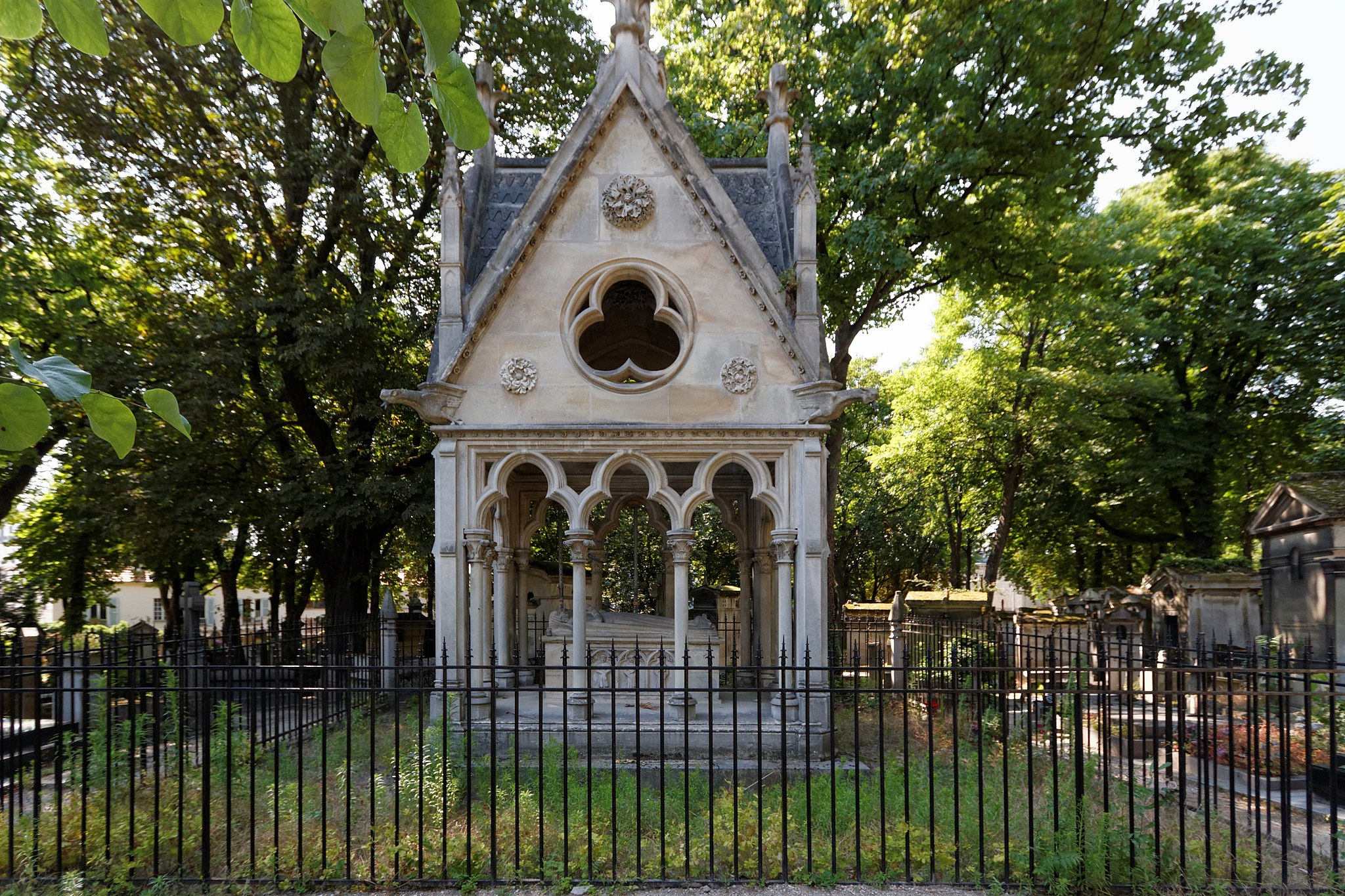
14 Aug Paris Women’s History in Père Lachaise
Bold and sexy women must always have existed everywhere, but in history they seem to be a French specialty. There are a number of places where you can learn about them in Paris. The Louvre and Orsay museums are great, for instance, or the royal palace at Versailles. But if you are interested in the colorful sides of Paris women’s history, don’t miss Père Lachaise Cemetery!
Père Lachaise, founded under Napoleon in 1804, was Paris’s first non-sectarian cemetery. It was also the first garden cemetery, a 19th century trend that brought us London’s so-called Magnificent Seven cemeteries, New

Père Lachaise Cemetery
York’s Green-wood, Boston’s Mount Auburn, and so on. These cemeteries were intended as parks, where the public could stroll and even picnic. And one of the attractions (aside from groves, ponds, etc) was meant to be the magnificent tombs of well-known people. Indeed, the founders of Père Lachaise jump-started this aspect by transferring some famous tombs there, including the one you see above. Thus is the joint tomb of the iconic romantic couple of the Middle Ages, theologian Abélard and his abbess wife Héloïse.
And they were certainly successful in attracting the tombs of the prominent—including many prominent women. There are certainly famous men in the cemetery, such as (to start with composers) Chopin, Rossini, and Bizet. And the two most visited tombs are those of English-world celebs Oscar Wilde and Jim Morrison. Yet there are many fascinating women buried here as well. A short list would be long but would have to include: Sarah Bernhardt, Isadora Duncan, Gertrude Stein and Alice B Toklas, Colette, Maris Callas, and Edith Piaf. These are the kind of bold and sexy women that makes Paris women’s history so special and intriguing.
Here are three of my favorite tombs in Père Lachaise. Two are of women, and one is (as I will explain) important to Parisian women.
The racy writer
I’ll start with one from my list above: the tomb of Colette, which is right near the main
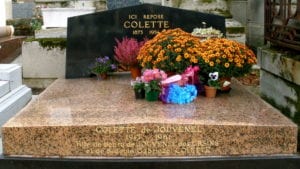
Colette’s tomb
entrance to the cemetery. Colette was an astonishing person. She is probably the most famous French woman writer today. Her four early Claudine novels are very popular in France. And her last book, Gigi, is well-known around the world—mainly, no doubt, because of the movie, starring Audrey Hepburn—whom Colette herself discovered. She was also a racy person. After she had left her first husband (who discovered her gift for writing but kept the copyrights to her first books for himself) she created a scandal by carrying on an affair with a cross-dressing aristocrat called Mathilde de Morny, and generally known at the time as Max or uncle Max. The scandal reached its peak when Colette and Max
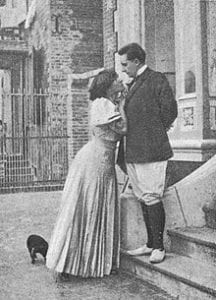
Colette and Max
kissed on stage at the Moulin Rouge—a pretty bold gesture for 1907! Colette kept most of her raciness for her writing, however, in which her biggest themes are lesbianism and courtesans—the high class sex workers who were so important in Belle Epoque Paris’s life and of whom Colette’s Gigi is the most famous example.
The cross-dressing painter
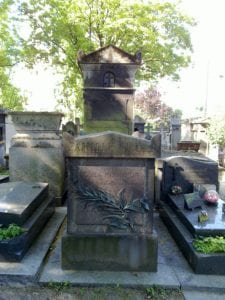
A thruple in death: Ducas, Bonheur, Klumpke
Next is another tomb of a bold and racy woman, the painter Rosa Bonheur. Bonheur is not famous today, but before the Impressionists began the turn toward abstraction that typifies modern art, she was a big star of the art world. An example in an American museum is the vast hyperrealistic The Horse Fair that fills a wall at the Metropolitan Museum.
Bonheur probably interests modern viewers more as a personality than as an artist, though. She was one of those artistic 19th century women who lived her life in households consisting of two women—what today historians call ‘Boston marriages.’ It is impossible for us to know what went on in private, but one tends to assume that the women in these ‘marriages’ were mostly what today we would call lesbians. But Bonheur was not only probably a lesbian, she was also what we would call gender-queer. She was strikingly non-feminine and often dressed in men’s clothing. She lived in two Boston marriages: the first with a woman called Nathalie Ducas, the second (after Ducas’s death) with an American painter called Anna Klumpke.
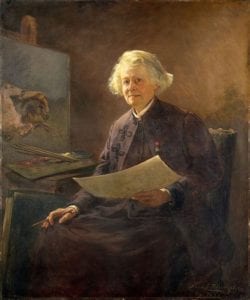
Bonheur by Klumpke
I am giving you two pictures. One is a striking portrait of the elderly Bonheur by Klumpke, the other the Ducas family tomb, where not only Nathalie is buried, but also Bonheur and Klumpke both (as you can see from the plaques on the front).
The fertility cult
Finally, let me show you one of the sights every Parisian knows in the cemetery: the tomb of Victor Noir. Noir a young left-wing journalist who was shot by Prince Pierre Bonaparte, and his tomb long served As the center of many left-wing rallies. You might think you’re seeing things, but no, that really is a realistic death erection in his trousers,
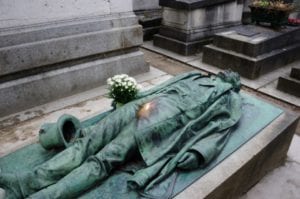
Victor Noir’s tomb
and yes, it is rubbed clean of verdigris. If you look carefully, you can see that his lips are also clean. That is because Victor, with his erection, serves as a fertility cult place-of-worship for Parisian women who want to pray to find a boyfriend, get pregnant etc. The tradition is that you kiss his lips, leave flowers in his hand (as you can see in the photo) or hat and rub his erection. I have heard from some gay friends that they pray to Victor Noir as well!
So if you want to know about Paris women’s history—the history of bold and sexy women that really is one of the things that makes Paris Paris—don’t only visit the museums and Versailles. Take a stroll around Père Lachaise as well! Or, if you can’t go to Paris (because none of us can go anywhere right now!) take Shady Ladies Tours’ Père Lachaise tour on Zoom the next time we offer it.



